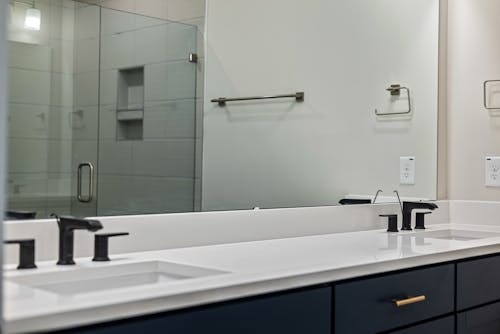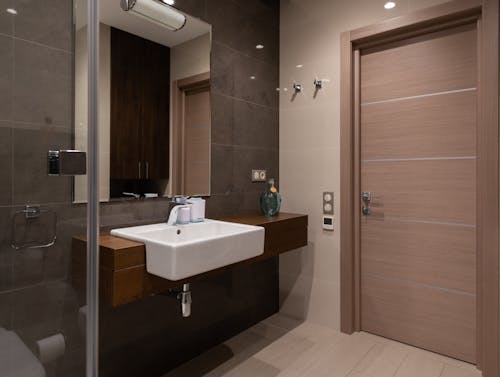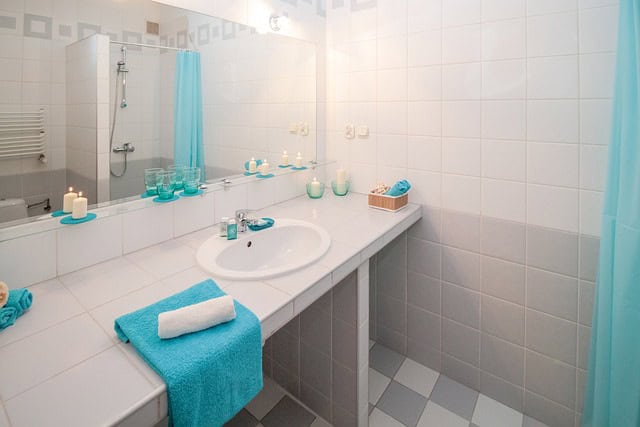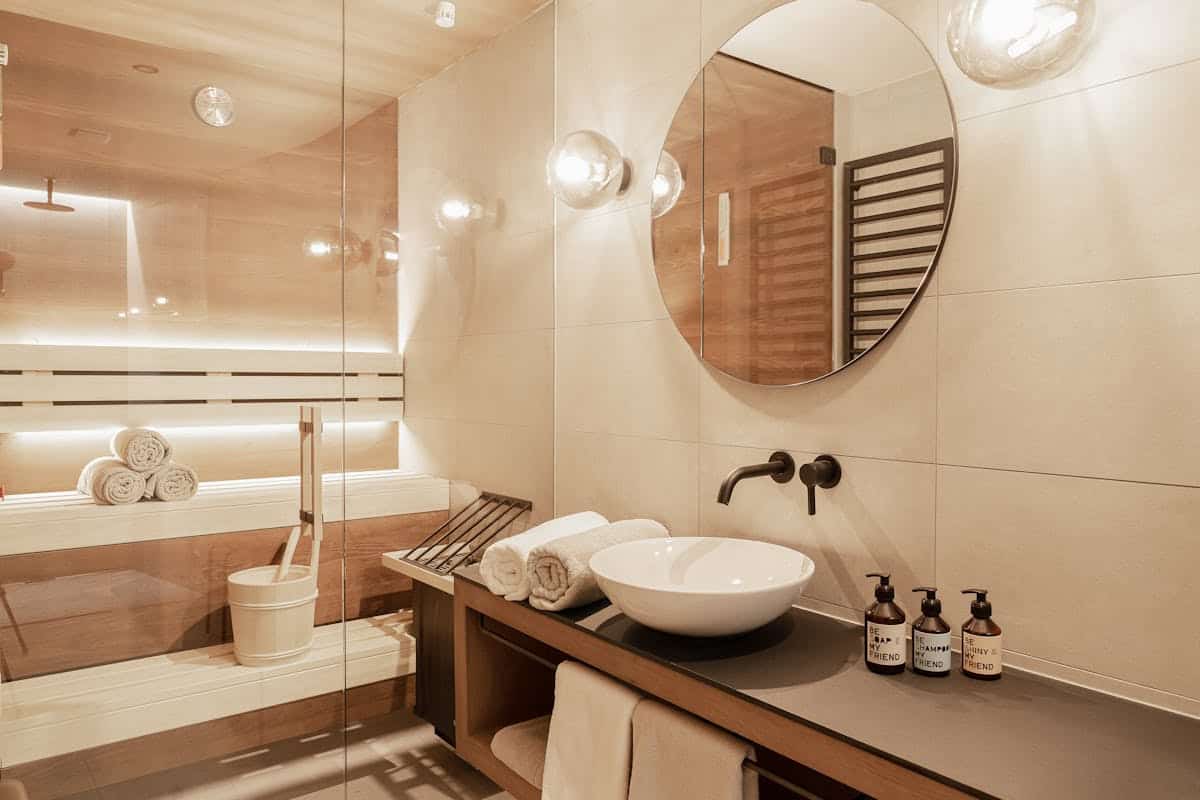Maintaining good air quality in your bathroom is essential for ensuring a healthy living environment.
With the right strategies and practices, you can create a space that promotes well-being and comfort.
In this guide, we will explore the importance of bathroom air quality and provide you with 8 practical tips to enhance it.
Table of Contents
Understanding Bathroom Air Quality

The cleanliness and freshness of the air in your bathroom are referred to as bathroom air quality. Several medical conditions, including as allergies, skin irritations, and respiratory disorders, can be brought on by poor air quality. VOCs (volatile organic compounds), bacteria, mold, and smells are common contaminants found in restrooms.
Common Pollutants in Bathrooms

Although it may appear that your bathroom is a clean safety, regular activities and humidity can actually serve as an invitation for unexpected pollutants. There are hidden dangers to your health and comfort in this area, from lingering smells to microscopic mold spores. Let’s examine the typical offenders that may be hiding in your bathroom and how to deal with them to create a fresher, healthier space.
Mold and Mildew
One of the biggest threats to bathroom air quality is mold and mildew. These fungi flourish in damp, humid environments, making bathrooms a prime breeding ground. Mold spores are microscopic and easily airborne, and when inhaled, they can trigger allergic reactions and respiratory problems in some people. Symptoms can range from a stuffy nose, sneezing, and itchy eyes to coughing, wheezing, and difficulty breathing.
The presence of mold and mildew can also contribute to a musty odor in your bathroom, further reducing the overall air quality. Since these fungi can spread quickly, it’s crucial to address any visible mold growth promptly and take steps to prevent its return by promoting good ventilation and reducing moisture levels in your bathroom.
Bacteria
Bathrooms are teeming with microscopic life, and while some bacteria are harmless, others can pose a significant threat to bathroom air quality. Every flush of the toilet, every wash of your hands, and even showering creates a plume of microscopic water droplets that can carry bacteria into the air. These droplets can land on surfaces throughout the bathroom, and if not properly cleaned and disinfected, they can multiply and spread illness.
Common bacterial culprits include E. coli, Staphylococcus aureus (staph), and Salmonella. These bacteria can cause a range of unpleasant symptoms, from gastrointestinal distress and vomiting to skin infections and respiratory problems. Maintaining a clean bathroom environment and practicing good hygiene are crucial steps in minimizing the spread of bacteria and protecting it.
VOCs
Many everyday household products contain volatile organic compounds (VOCs), and your bathroom is no exception. These chemicals can significantly impact your bathroom air quality. Found in everything from cleaning supplies and disinfectants to personal care items like hairspray and perfume, VOCs readily evaporate at room temperature, releasing gases or vapors into the air you breathe.
While some VOCs have a faint odor, others are undetectable by smell. Regardless, prolonged exposure to VOCs can irritate the eyes, nose, and throat, and may even trigger headaches, nausea, and dizziness. In some cases, high concentrations of VOCs can exacerbate respiratory problems like asthma.
Maintaining good it is essential for your health, so it’s important to be mindful of products containing VOCs. Look for low-VOC or VOC-free alternatives whenever possible. Additionally, proper ventilation is crucial to prevent VOCs from accumulating in your bathroom. Turn on the exhaust fan during showers or baths and open a window when using cleaning products or personal care items with VOCs.
Odors
While not necessarily harmful themselves, unpleasant odors are a telltale sign of something amiss in your bathroom and can significantly impact your bathroom air quality. Lingering smells from mold, mildew, sewage, or even harsh cleaning products can create an unpleasant environment and potentially mask more serious issues.
Mold and mildew growth, for instance, often produce a musty odor. These fungi thrive in damp environments, and their presence not only contributes to unpleasant smells but can also trigger allergic reactions and respiratory problems. Similarly, sewage odors can indicate plumbing leaks or venting issues, which require immediate attention to prevent further damage and potential health risks.
Even strong-smelling cleaning products can negatively impact it. While they may temporarily mask other odors, the harsh chemicals they contain can irritate the respiratory system and contribute to indoor air pollution.
Maintaining a fresh and odor-free bathroom environment is essential for comfort and overall well-being. By addressing the source of the odors, whether it’s mold growth, plumbing problems, or lingering cleaning product scents, you can significantly improve it and create a more pleasant and healthy space.
8 Ways to Improve Bathroom Air Quality

Bathrooms are often overlooked when it comes to air quality, but that steamy shower can harbor hidden threats. Don’t let unpleasant odors or lingering moisture compromise your well-being! This guide explores eight simple yet effective ways to improve air quality in your bathroom, creating a healthier and more refreshing space for everyone.
Ventilation
Proper ventilation is the cornerstone of maintaining a healthy bathroom air quality. Bathrooms are naturally prone to high moisture levels due to showering, bathing, and handwashing. This moisture creates a breeding ground for mold, mildew, and bacteria, and can also trap unpleasant odors.
Here’s where ventilation comes in. By installing an exhaust fan or opening windows, you can significantly improve it. Exhaust fans work by drawing out moisture-laden air and replacing it with fresh air from outside. Look for a fan with enough power to handle the size of your bathroom. Aim for a fan that can exchange the entire volume of air in your bathroom within eight minutes or less.
Opening windows after showering or bathing is another effective way to promote air circulation and remove excess moisture. This simple step can help prevent mold growth and keep it fresh and healthy.
Remember, good ventilation practices are not just about removing moisture. They also help eliminate odors and airborne pollutants, creating a more comfortable and healthy bathroom environment.
Natural Air Fresheners
While unpleasant odors can be temporarily masked with artificial air fresheners, these products often contain harsh chemicals that can irritate the respiratory system and contribute to indoor air pollution. Natural air fresheners, on the other hand, can be a safe and effective way to improve it and create a more pleasant-smelling environment.
Here are some natural options to consider:
- Essential Oils: Diffusers are a popular way to disperse essential oils into the air. Choose invigorating scents like lemon, grapefruit, or tea tree oil that naturally deodorize and uplift the mood. Remember, a little goes a long way with essential oils, so dilute them properly with water before diffusing.
- DIY Sprays: Create your room spray with a mixture of water, witch hazel (a natural disinfectant), and a few drops of your favorite essential oil. This is a cost-effective way to personalize your bathroom scent and target lingering odors.
- Potpourri: Opt for potpourri made from dried flowers, herbs, and spices. Not only will it add a touch of rustic charm to your bathroom, but the natural fragrance can help neutralize mild odors. However, be mindful of dust and replace your potpourri regularly to prevent mold growth.
By incorporating natural air fresheners into your bathroom routine, you can address unpleasant smells while promoting a healthier it free from harsh chemicals.
Indoor Plants
Bathrooms often lack natural ventilation, making them susceptible to moisture buildup and airborne pollutants. Here’s where nature can lend a helping hand! Introducing air-purifying plants is a fantastic way to naturally improve your bathroom air quality.
These plants act as living filters, absorbing harmful toxins like formaldehyde and ammonia commonly found in cleaning products and personal care items. As they breathe in these pollutants, they release clean oxygen back into the air, promoting a healthier bathroom environment. Beyond air purification, bathroom plants add a touch of life and greenery, creating a more spa-like atmosphere.
Selecting the Right Plant Warriors:
When choosing plants for your bathroom, consider the specific light conditions. Bathrooms often have limited natural light, so opt for varieties that thrive in low-light environments. Here are some excellent choices:
- Snake Plant (Mother-in-Law’s Tongue): This low-maintenance succulent is a champion air purifier and thrives on neglect.
- Peace Lily: This elegant plant boasts beautiful white flowers and effectively removes mold spores and other toxins from the air.
- Spider Plant: A fast-growing and easy-to-care-for option, spider plants are known for their air-purifying abilities and produce adorable spiderettes that add a cascading touch.
Remember, proper plant care is essential. While these plants are tolerant of lower light, they still need some indirect sunlight. Avoid overwatering, and ensure your chosen plant thrives in the humidity levels of your bathroom. With the right selection and care, indoor plants can become powerful allies in your quest for improved it.
Air Purifiers
Adding a HEPA filter air purifier to your bathroom arsenal can significantly improve the air you breathe in this room. HEPA stands for High-Efficiency Particulate Air, and these filters are designed to trap microscopic particles that can irritate allergies and sensitivities.
Imagine trapping dust bunnies, pollen making your eyes itchy, and even pet dander before they have a chance to float around. HEPA air purifiers can handle these tiny culprits and more, helping to create a cleaner and more comfortable bathroom environment.
Regular Cleaning
Creating a healthy bathroom environment starts with a consistent cleaning routine. Regular cleaning removes dirt, debris, and moisture – the perfect breeding ground for mold, mildew, and bacteria. Mold spores and bacteria can easily become airborne, contributing to unpleasant odors and potentially triggering respiratory problems.
By cleaning your bathroom frequently, you can prevent these harmful organisms from multiplying. Focus on areas that tend to harbor moisture, such as the shower stall, bathtub surround, toilet bowl, and sink. Use non-toxic cleaning products whenever possible to minimize exposure to harsh chemicals that can irritate the lungs and contribute to indoor air pollution. Opt for natural cleaning solutions like vinegar and water or baking soda and water. These are effective against common bathroom grime and much gentler on your respiratory system.
Regular cleaning goes beyond just surfaces. Wash bath mats and shower curtains frequently, as they can trap moisture and harbor bacteria. Consider using quick-drying bath mats made from materials like bamboo or diatomaceous earth. Don’t forget to disinfect your toothbrush holder and other bathroom accessories that can become breeding grounds for bacteria.
By incorporating regular cleaning into your routine, you can create a cleaner, healthier, and more pleasant bathroom environment.
Minimize Moisture
Moisture is the lifeblood of mold and mildew, and unfortunately, bathrooms are breeding grounds for both. Combating excess moisture is crucial to creating a healthy and comfortable bathroom environment. Here are a couple of effective strategies:
- Dehumidify: Consider using a dehumidifier, especially in bathrooms prone to dampness. These handy appliances help remove excess moisture from the air, preventing mold and mildew growth. Look for a dehumidifier sized appropriately for your bathroom to ensure optimal efficiency.
- Shower Curtain Power: A good quality shower curtain liner plays a vital role in moisture control. Opt for a liner made of a mildew-resistant material and avoid flimsy liners that allow water to seep through. After showering, ensure the liner unfurls completely to allow proper drying and prevent moisture build-up.
By implementing these simple strategies, you can significantly reduce moisture levels in your bathroom, creating a less hospitable environment for mold and mildew, and promoting a fresher, healthier bathroom experience.
Limit VOCs
Many of the cleaning products and personal care items we use in the bathroom release volatile organic compounds (VOCs) into the air. These chemicals can irritate the respiratory system and contribute to indoor air pollution. Here’s a two-pronged approach to minimize VOCs in your bathroom:
- Choose Eco-Friendly Cleaning Solutions: There’s a wide range of eco-friendly cleaning products available that are formulated with minimal or no VOCs. These products often rely on natural ingredients like vinegar, baking soda, and citrus extracts, which are just as effective at cleaning while being gentler on your lungs and the environment. Look for labels that advertise “low-VOC” or “VOC-free” to ensure you’re making a healthy choice.
- Rethink Your Personal Care Routine: Many personal care items, such as hairspray, deodorants, and even some cosmetics, contain VOCs. Consider switching to natural or organic alternatives that are free from harsh chemicals. You might be surprised by the variety of effective and gentle personal care products available these days.
By making these simple changes, you can significantly reduce your exposure to VOCs and create a healthier breathing environment in your bathroom.
Professional Inspections

Maintaining a healthy bathroom environment goes beyond everyday cleaning. Scheduling regular inspections and maintenance for your HVAC system and plumbing plays a vital role in identifying and addressing potential air quality issues before they escalate.
Here’s how professional inspections can benefit your bathroom:
- HVAC System: A qualified technician can assess the performance of your ventilation system, ensuring proper airflow and exhaust of moisture-laden air. This helps prevent mold growth, a major contributor to poor indoor air quality. They can also clean air ducts, removing dust and allergens that can circulate throughout your bathroom.
- Plumbing System: Leaks and faulty plumbing fixtures can lead to stagnant water and the growth of mold and mildew. A plumber can inspect your pipes, drains, and vents for leaks and ensure everything is functioning correctly. Additionally, they can check for sewer gas leaks, which can release harmful fumes into your bathroom.
By catching problems early on, professional inspections can save you money on repairs down the line and create a healthier bathroom environment for you and your family.
Conclusion
You can greatly improve the air quality in your bathroom and make your home a healthier place for you and your family to live by implementing these 8 suggestions. Keep in mind that maintaining your home’s air quality should be a top concern since it is essential to your general health. Now is the time to improve the air quality in your bathroom and get the rewards of a fresh, clean, and healthful environment. The quality of the air you breathe on a daily basis should be your top priority because it affects your health.
Explore more home improvement tips and tricks to enhance your living space and promote a healthier lifestyle. Start with your bathroom air quality and watch as your home becomes a haven of comfort and well-being. Make a difference in your health and happiness today!
What are the biggest threats to bathroom air quality?
The biggest threats to bathroom air quality are moisture, mold, mildew, and bacteria. These can be caused by poor ventilation, infrequent cleaning, and the use of harsh chemicals.
How can I improve the air quality in my bathroom?
The best ways to improve bathroom air quality are to increase ventilation, control moisture, clean regularly, use natural cleaning products, and purify the air with plants or an air purifier.
What are some signs of poor bathroom air quality?
Signs of poor bathroom air quality include visible mold or mildew, musty odors, condensation on windows or mirrors, and respiratory problems like allergies or asthma.
What are the health risks of poor bathroom air quality?
Poor bathroom air quality can trigger allergies, asthma attacks, and other respiratory problems. It can also contribute to the growth of mold and mildew, which can cause further health issues.
What are some easy ways to improve bathroom air quality without spending a lot of money?
Some easy and affordable ways to improve bathroom air quality include opening windows, using a dehumidifier, cleaning regularly with natural products, and placing air-purifying plants in the bathroom.

